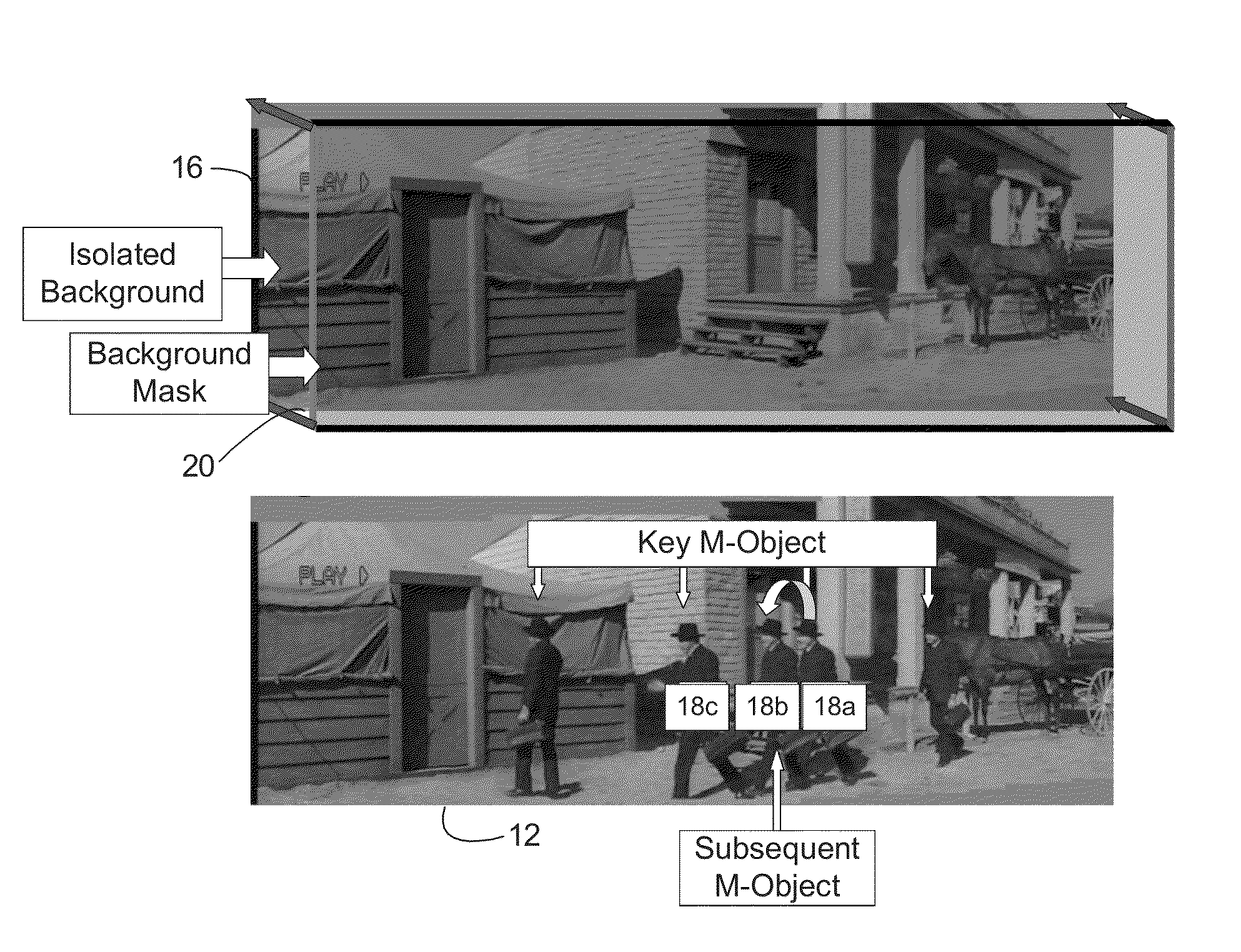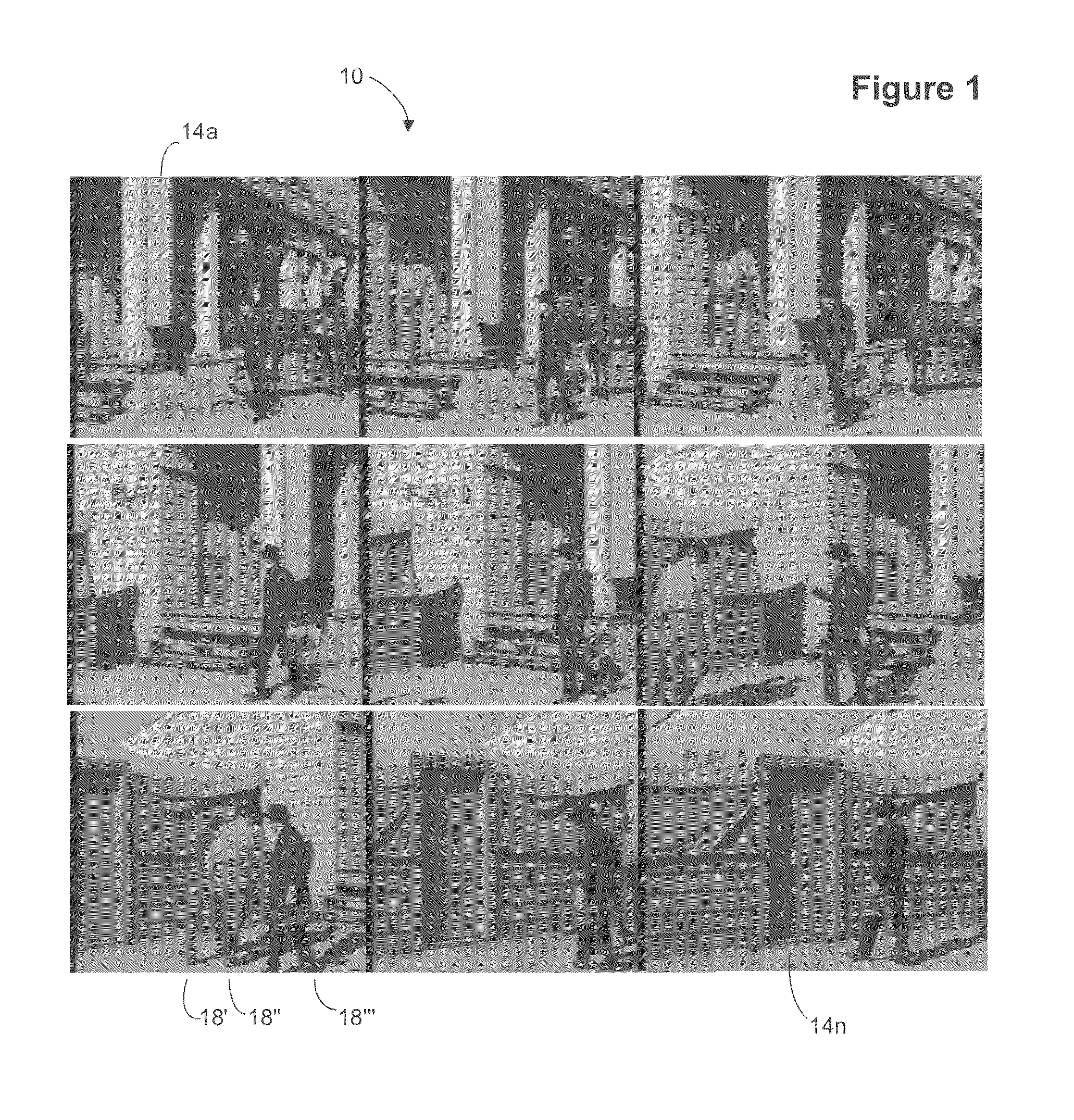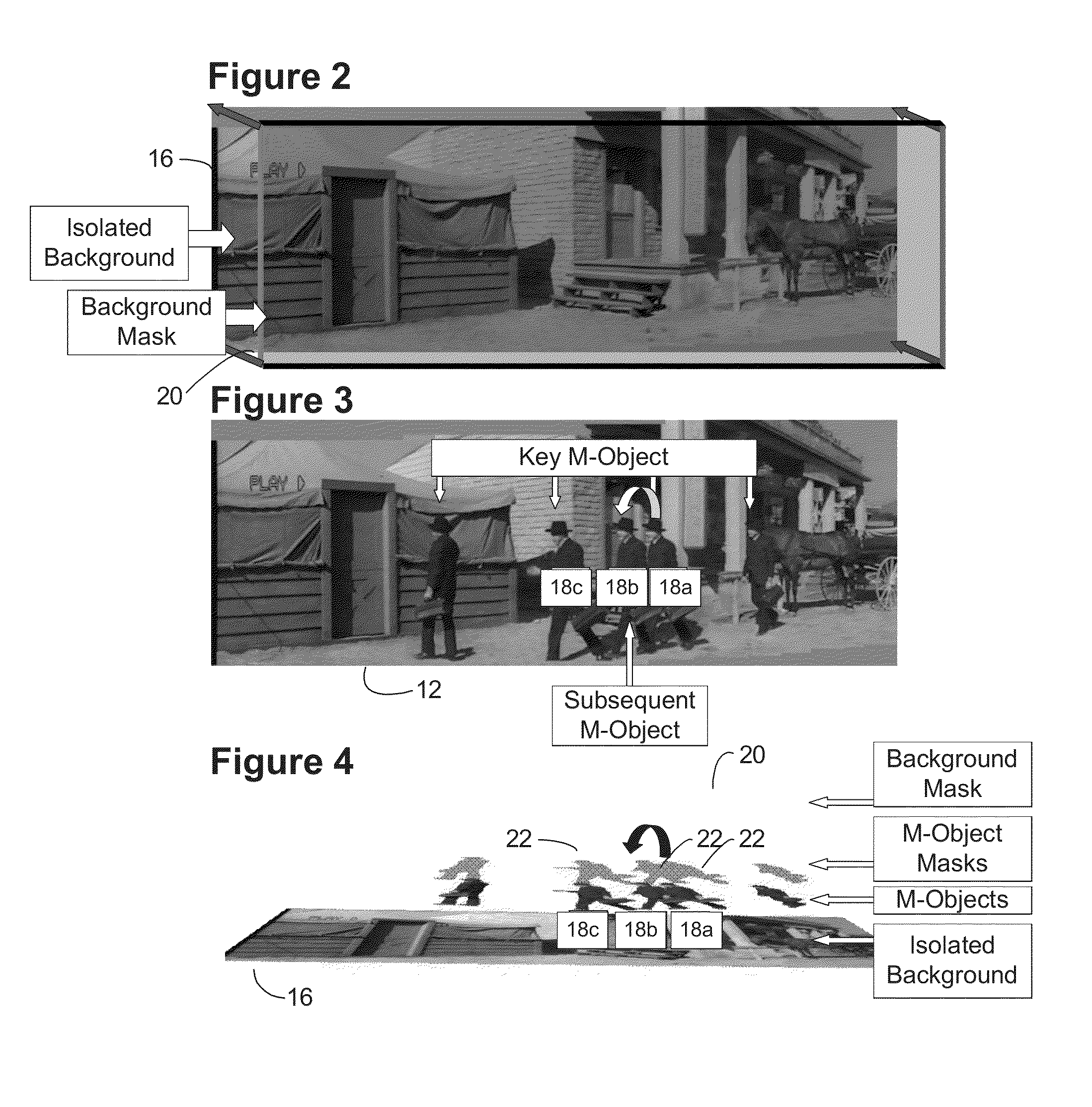System and method for rapid image sequence depth enhancement with translucent elements
a technology of translucent elements and image sequences, applied in image enhancement, visual presentation, instruments, etc., can solve the problems of not being able to automatically adjust the position and shape of the mask to correspond with image feature displacement and distortion from one frame to another, and the system does not utilize the underlying luminance gray scale of objects in images. , to achieve the effect of speeding up the conversion of 2-d images and easing the compositing process
- Summary
- Abstract
- Description
- Claims
- Application Information
AI Technical Summary
Benefits of technology
Problems solved by technology
Method used
Image
Examples
Embodiment Construction
[0121]Feature Film and TV series Data Preparation for Colorization / Depth enhancement: Feature films are tele-cined or transferred from 35 mm or 16 mm film using a high resolution scanner such as a 10-bit SPIRIT DATACINE® or similar device to HDTV (1920 by 1080 24P) or data-cined on a laser film scanner such as that manufactured by IMAGICA® Corp. of America at a larger format 2000 lines to 4000 lines and up to 16 bits of grayscale. The high resolution frame files are then converted to standard digital files such as uncompressed TIP files or uncompressed TGA files typically in 16 bit three-channel linear format or 8 bit three channel linear format. If the source data is HDTV, the 10-bit HDTV frame files are converted to similar TIF or TGA uncompressed files at either 16-bits or 8-bit per channel. Each frame pixel is then averaged such that the three channels are merged to create a single 16 bit channel or 8 bit channel respectively. Any other scanning technologies capable of scanning ...
PUM
 Login to View More
Login to View More Abstract
Description
Claims
Application Information
 Login to View More
Login to View More - R&D
- Intellectual Property
- Life Sciences
- Materials
- Tech Scout
- Unparalleled Data Quality
- Higher Quality Content
- 60% Fewer Hallucinations
Browse by: Latest US Patents, China's latest patents, Technical Efficacy Thesaurus, Application Domain, Technology Topic, Popular Technical Reports.
© 2025 PatSnap. All rights reserved.Legal|Privacy policy|Modern Slavery Act Transparency Statement|Sitemap|About US| Contact US: help@patsnap.com



